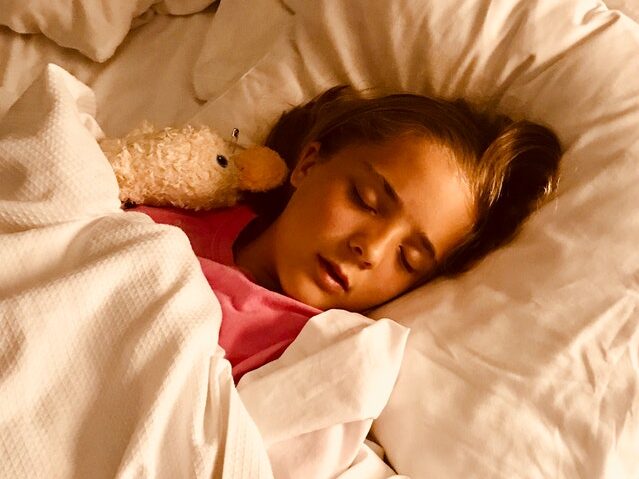
19 Sep Child Anxiety and Sleep: 3 Tips to Improve Bedtime
“But I’m not tired!” “5 more minutes!” “This game is almost over!” Do these statements echo through your house every evening? Even after a long day filled with school, activities, and homework, many children will fight their bedtime in an attempt to enjoy just a few more minutes of the day.
For a child struggling with anxiety, the start of bedtime can also be the start of heightened anxiety. The result? Later bedtimes, a stressed out child, overwhelmed parents, and a poor night sleep for the household. But, child anxiety and sleep don’t have to be mutually exclusive. Let’s discuss 3 ways to improve your child’s bedtime routine and ensure everyone in the house is getting their Zzzzz for the night.
Limit Screen Time
For a child struggling with anxiety, bedtime can already be a challenge which leads to an increase in irritability and crankiness in the morning. How can you help? By limiting screen time before bed. It allows your child the time to wind down for the night, instead of being stimulated by video games, Snapchat streaks, and group chats. Limiting screen time will also reduce conflict around bedtime and improve sleep quality. Who wouldn’t want that?!
One way to implement screen time limits is to introduce a screen time curfew in the household. Ideally screens should be shut off 2 hours before bedtime, but do what’s realistic for your family. Even shutting down screens 30 minutes before bed will help establish a healthier bedtime routine.
Routine
Bedtime routines aren’t just for toddlers. A consistent bedtime routine can help signal the body and mind that it’s time for bed. A routine can be a simple as brushing teeth, putting on pajamas, and reading a story. However, for a child with anxiety, including coping skills into the bedtime routine can be a helpful way to manage symptoms before bed. These coping skills can include taking a warm shower/bath, coloring, or listening to music. To learn more coping skills for anxiety, check out this resource. Bonus tip? These activities are great replacements for screen time in your evening routine! Every child, and family, is unique so don’t hesitant to do what works for your household. What’s most important is finding something that works, and sticking to it.
Worry Time
Worry Time is a dedicated time for your child to talk about their worries with a trusted adult. Let your child choose when to have Worry Time (it’s best not right before bed) such as before dinner, on the car ride from school, or after homework is finished. This is a practice that is consistently used to help children manage anxiety. The goal for Worry Time is to allow your child a space to talk openly about the things on their mind and “leave them” in the moment. By allowing your child to “get out” their worries ahead of bedtime, it can reduce interference with sleep.
Now, how does your child “leave” their worries? Help your child visualize putting these worries into a box and shutting the top, or filling a big balloon and letting it go. These exercises can aid your child in not carrying these worries with them to sleep.
This worksheet provided by the American Psychological Association is a helpful tool to get you started with your child’s own Worry Time.
Time to try!
Childhood anxiety doesn’t have to mean a struggle at bedtime. Limited screen time, consistent routine, and Worry Time can bring peace into the household while also teaching your child valuable skills to manage their anxiety. By implementing these 3 tips, you are on your way to tackling child anxiety and sleep challenges. If you’d like to talk with one of our therapists, please contact us.

North Shore Family Services is a team of skilled and approachable therapists that help parents, children, teens, adults, and couples reduce anxiety and stress, learn effective problem-solving techniques, and manage emotions and behaviors that inhibit personal, school, family, and relationship success. We make therapy a productive, engaging and relaxing place for everyone to work hard and make the improvements they desire. To find the right-fit therapist for you and your family, visit our clinician’s page.



Sorry, the comment form is closed at this time.